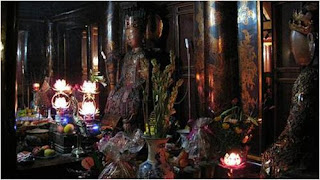Description
- Taking a ride on a car or train for two hours from Hanoi to Haiphong, then on a high-speed vessel for another hour, visitors will arrive at Cat Ba Island, the biggest island (100km²) out of the 366 islands on the Lan Ha Bay.
- Right from the moment visitors set foot on Cat Ba gangway, looking afar to contemplate the enchanting scenery of immense sky and magnificent mountains and breathing the fresh air from the sea, visitors will feel comfortable and their tiredness after a long trip will disappear. Surely, visitors want to go on with their journey at once.
- Visitors should hire a Minsk motorbike, out of 400 motorbikes and cars here, to ride to any place visitors want to visit. First of all, visitors should rent a room in a hotel, because the hotels on this island are often overcrowded due to the ever-increasing number of visitors to Cat Ba Island, although more hotels and hostels are being built.
It is very pleasant to stay in a hotel, whose back leans against the mountain and its face looks towards the sea, and enjoy the fresh air and beautiful scenery around.
Beauty-spots in Cat Ba
- Trans-island road: 27km long with many mountain pass, meander cols, slopes, along the sea shore, through National Pack, spectacular array of sea and island scenery.
- Cat Ba National Park: 15 km to the North - West of the town. This Park covers an area of 15,200 ha, including 9,800 ha of forests with splendid grottoes. In tropical and primeval forests, there is a rich fauna and flora. There are 745 species of plants, including various species of rare wood trees so as Tri Ly, Lat Hoa, Lim Set, Gie Hoa, Kim Giao, white wood.
Kim Giao chopsticks used to be offered to Kings which can cause bubbles and turn itself into red when touched poisoned food. Cho dai tree that can be found in the old forest is endangered specie named in the Red Book, the only other in the world where we can find this tree is Hymalaya mountain.
Cat Ba National Park is home to 20 species of mammals, 69 species of birds, 20 species of reptiles and species of amphibians, species of 11 frogs. Particularly, the rarest animals in the world that can only be found in Viet Nam is Vooc (white faced monkeys). Another strange is Ma Tien fruit, a toxic fruit, if a person eats Ma Tien he will die immediately, but the white-faced Vooc can eat both leaf and fruit to feed themselves.
- Trung Trang Grotto: 15km from the town, close to the trans-island road. There are a lot of beautiful natural stalactites that makes you feel like flying high, visiting the Elysium on earth. The grotto can accommodate hundreds of people.
- Hung Son grotto: 13km from the town, on the trans-island road. Another name is 'Army Medical Grotto' because in the sabotaged war by America, an army hospital was built in the grotto with capacity of hundreds of beds in the mountain. This structure wrote feat of arms about courage of people.
- Phu Long Grotto (Cai Vieng): recently found, it is considered more beautiful than Trung Trang grotto. In the grotto, stalactites and moisture steam make us imagine the way to sky, the way to sea, many quintessential vaults, golden mountain, silver mountain...
- Beaches: Cat Co 1, Cat Co 2, Cat Dua, Cat Ong, Duong Danh,... are small rainy, secretive, shaded bathing grounds with fine white sand and clear water. A theme park called 'Palace under the sea' will be built to enable human to directly observe porpoises, lobsters, sharks, sea tortoises, cutlet-fish,.. slowly wandering near red corals.
- Coming out of the caves and grottoes visitors should spend a little time to contemplate the sunset over Lan Ha Bay. On the golden background of the horizon and the dark blue of the sea, the heaving islets become multiform, the white sea-gulls hover and sea-eagles make circles in the sky, all beautifying the immense and fascinating space, and enchanting the visitors.
- Cat Ba is also home to
Halong Bay cultural relics, the relics of an ancient Vietnamese culture and many archaeological relics from the new stone-age period that were found on Cat Ba.
- Every year, on the first of April the dragon boats race of district island and of whole nation fishing industry is held on the sea of Cat Ba.
If you are interested in exploring Vietnam travel you can visit Vietnam travel company, Halong cruise, Halong Bay, Halong tours site to know further attractive places.



